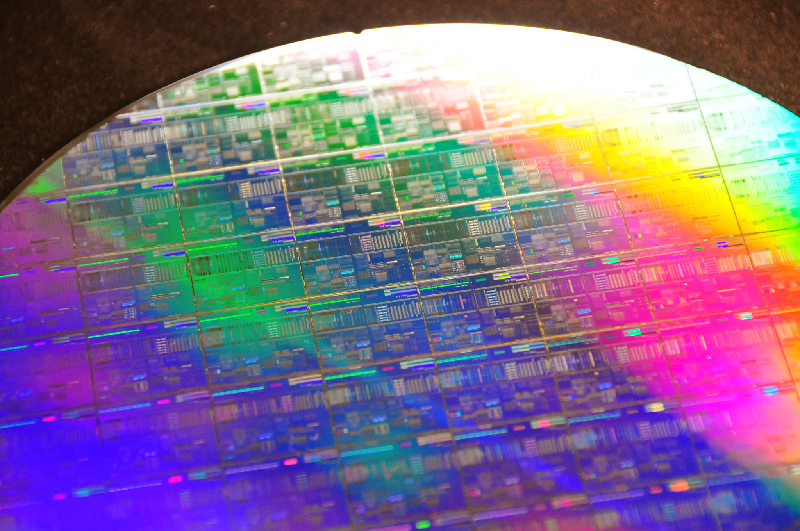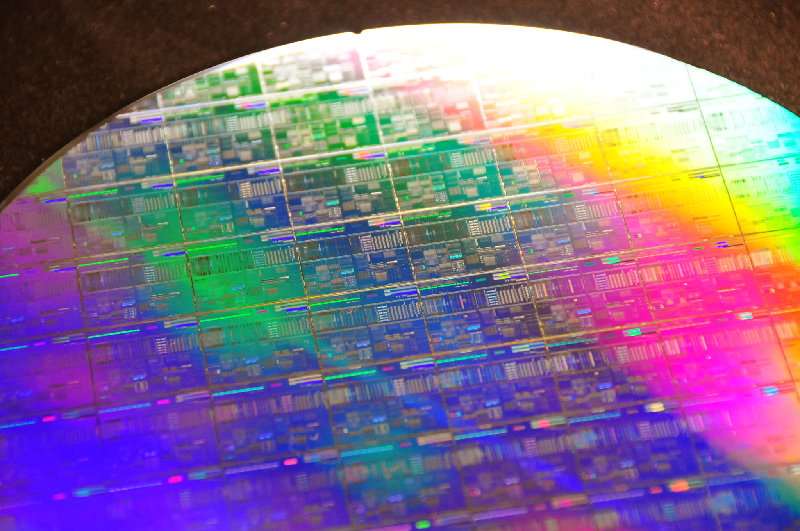Light Seems to Pull Electrons Backward
Physicists have long assumed that light hitting a metal surface at an angle pushes on the free electrons, moving them forward, yet some recent experiments show the opposite—incident light seems to pull electrons backward. Based on new experiments, a team of researchers now offers partial clarification, at least on the experimental side. Metals in vacuum act one way, while those exposed to air behave differently, possibly because the light first interacts with molecules attached to the surface. The experiments cast doubt on researchers’ basic understanding of how light interacts with solid materials, knowledge that lies at the core of modern photonics technology.
Physicists know that light glancing off of a metal surface will impart some forward momentum to the metal. Because metals are good conductors, with lots of electrons free to move at the surface, theorists have also assumed that incident light impacts electrons and drives them forward, an effect known as photon drag. The effect lies at the basis of efforts to engineer delicate light-metal interactions in nanophotonics devices.
“Free electrons dominate the conductivity of simple metals like gold,” says Jared Strait, of the National Institute for Standards and Technology (NIST) in Gaithersburg, Maryland. “So the general assumption has been that the free electrons ought to receive the momentum first among the metal constituents.” Indeed, some experiments with laser light directed onto metallic surfaces have found just this outcome. Even so, other experiments have found the opposite result—the incident light, striking at an angle, produced current flowing back in the direction from which the light came.
Hoping to explain the differences, researchers led by Strait and Henri Lezec, also at NIST, have now conducted a new set of experiments. In an initial experiment, Strait and colleagues tried to simplify the problem, experimenting with light striking a thin gold film held in vacuum, where no stray molecules could affect the metal surface. The team aimed an infrared laser toward the metal surface at a glancing angle and placed an electrode at the far end of the metal sample. This electrode would detect any voltage created if the light drove the electrons along the metal, which would create an excess of negative charge at the far end.
As they varied the angle, the team measured a voltage that largely agreed with theoretical expectations based on the simple light-pushing-electrons picture. However, the voltage they measured was the opposite of that expected, implying that the current flow was in the wrong direction. It’s a weird effect," says Strait. “It’s as if the electrons are somehow managing to flow backward when hit by the light.”
The team also conducted experiments with the metal exposed to air, and in striking contrast, the light pushed the electrons forward. These results show that the previous experiments weren’t actually inconsistent, but that light’s interactions with a metal surface are far more complex than was previously believed, says Strait. “We can no longer ignore this counterintuitive backwards current,” he says. “It is a surprising indication of the complexity of the solid-state system.”
“This finding is most unexpected and puzzling,” says quantum optics specialist Stephen Barnett of the University of Glasgow in the UK. “I'm really not quite sure what to make of it. Clearly there remains much to be understood in the interaction between light and surfaces.”
One very speculative idea, says Lezec, is that the incident photons may act not only on the free electrons in the metal, but also on so-called core electrons, which are not free to move through the material. In some unknown way, he suggests, these might act to produce a current in the opposite direction.
“The next step,” says Strait, “is to propose a comprehensive theory, with predictive power, to explain the backward current.” The answer, he believes, may come from further comparisons of the effect in experiments with different metals and from looking for behavior that depends on the polarization of the incident light.
This research is published in Physical Review Letters.
–Mark Buchanan
Mark Buchanan is a freelance science writer who splits his time between Abergavenny, UK, and Notre Dame de Courson, France.





